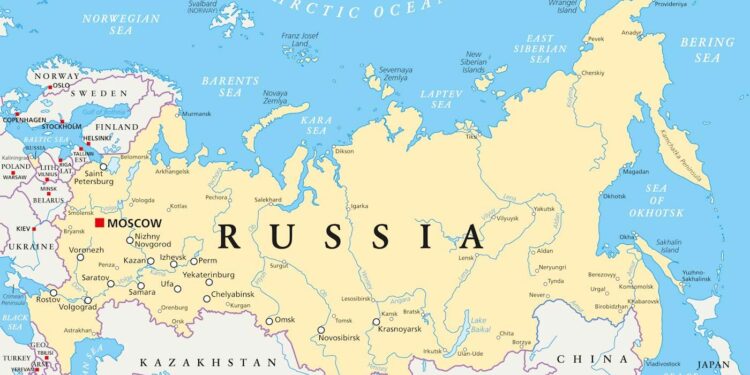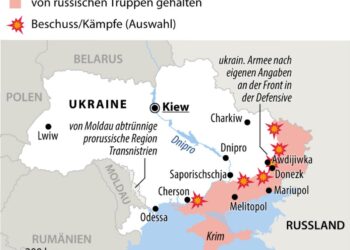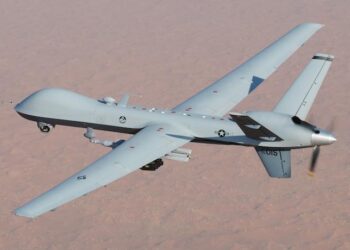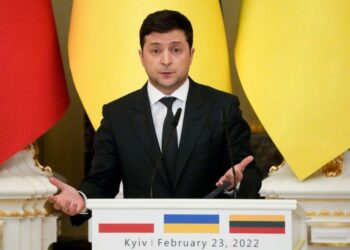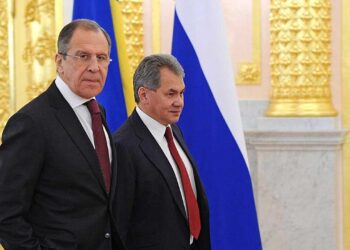In a dramatic escalation of the ongoing conflict, Russia has launched a targeted attack on Ukraine’s power grid, plunging large areas into darkness and raising concerns over civilian infrastructure damage. The strike comes amid heightened tensions as Moscow simultaneously voiced “extreme concern” over the recent deployment of US Tomahawk missiles, underscoring the deepening geopolitical standoff. The developments mark a significant flashpoint, with international observers closely monitoring the unfolding situation.
Russia Strikes Ukrainian Power Infrastructure Escalating Conflict Concerns
Russian forces targeted critical components of Ukraine’s power infrastructure, resulting in widespread blackouts across multiple regions. The latest strikes have disrupted electricity supply to key urban centers and industrial zones, intensifying humanitarian concerns as winter approaches. Ukrainian officials reported damage to substations and transmission lines, paralyzing essential services and complicating ongoing efforts to maintain stability amid the conflict.
Meanwhile, Moscow has voiced “extreme concern” over the deployment of US Tomahawk missiles in neighboring territories, accusing the West of escalating tensions in the region. Experts warn that this combination of military and technological provocations could deepen the crisis, potentially prompting a more robust response from all involved parties.
- Areas affected: Kyiv, Kharkiv, Dnipro
- Infrastructure impacted: Substations, transmission lines
- Human impact: Thousands facing power outages
| Aspect | Details |
|---|---|
| Strikes Conducted On | December 10, Early Morning |
| Missile Concerns | US Tomahawk Deployment |
| Russian Response | Official Statement of Concern |
Moscow Condemns US Tomahawk Missile Presence Amid Rising Tensions
Moscow’s reaction to the recent deployment of US Tomahawk missiles has been swift and unequivocal, heightening already strained diplomatic ties. Russian officials accuse the US of exacerbating regional instability by positioning advanced weaponry close to their borders. Kremlin spokespersons warn that such actions not only threaten national security but also risk escalating conflict dynamics in Eastern Europe.
The tensions come amid reports of a sophisticated attack targeting Ukraine’s power infrastructure, which Moscow attributes to ongoing hostilities. Observers note the delicate balance at play, with the US demonstrating military support for Kyiv while Russia maintains a firm stance against Western interference. Below is a summary of key points raised by Moscow regarding the missile presence:
- Security Risk: Tomahawk missile deployment seen as a direct threat to Russian strategic defenses.
- Provocation Concerns: Labeling the presence as an intentional provocation undermining peace efforts.
- Call for De-escalation: Urging Washington to reconsider military deployments to prevent further tensions.
| Aspect | Russian Position | US Justification |
|---|---|---|
| Missile Deployment | Seen as hostile and destabilizing | Defensive support for Ukraine |
| Regional Security | Threatened by advanced weaponry near borders | Measures to deter aggression |
| Diplomatic Dialogue | Calls for restraint and talks | Emphasizes support for sovereignty |
Analyzing Strategic Implications and Calls for Diplomatic De-escalation
The recent escalation in hostilities, marked by targeted attacks on Ukraine’s power grid, significantly alters the strategic landscape of the conflict. Disrupting critical infrastructure not only aims to undermine civilian morale but also poses serious challenges to Ukraine’s economic resilience and military coordination. Moscow’s declaration of “extreme concern” over the deployment of US Tomahawk missiles underscores the high-stakes nature of external involvement and signals a potential shift toward more aggressive posturing. This situation raises pressing questions about the risks of miscalculations spiraling into broader confrontation, compelling global actors to reassess their engagement frameworks.
Calls for diplomatic de-escalation have grown louder amid fears that further military escalation could destabilize the already fragile regional security architecture. Analysts emphasize the importance of urgent dialogue mechanisms and confidence-building measures to prevent inadvertent escalations. Key steps proposed include:
- Re-establishing communication channels between Moscow and Washington to clarify intentions and reduce misunderstandings.
- International mediation efforts, possibly led by neutral actors or multinational organizations, to facilitate negotiations.
- Temporary ceasefires focused on protecting civilian infrastructure, laying groundwork for broader peace talks.
| Stakeholder | Position | Potential Role in De-escalation |
|---|---|---|
| Russia | Security Concerns over US Arms | Engage in dialogue, limit military responses |
| Ukraine | Defense of Sovereignty | Open to mediated talks |
| United States | Supports Ukraine, Arms Supply | Facilitate communication with Moscow |
| International Community | Calls for Peace | Pressure for ceasefire and negotiations |
In Conclusion
As the conflict between Russia and Ukraine escalates, the recent attack on Ukraine’s power grid marks a significant development in the ongoing hostilities. Moscow’s expression of “extreme concern” over the deployment of US Tomahawk missiles underscores the heightened tensions and growing international stakes. The situation remains fluid, with diplomatic and military repercussions likely to unfold in the coming days, as global powers continue to monitor and respond to the evolving crisis.


